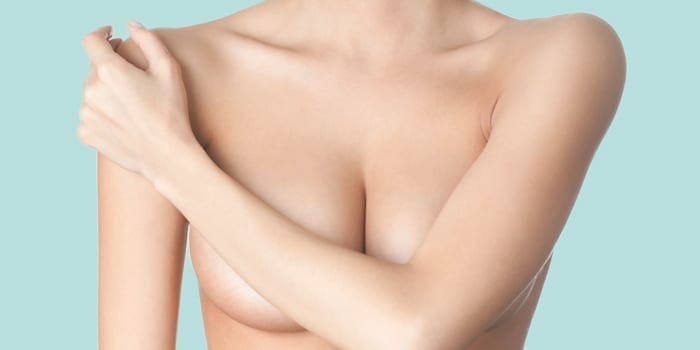Like most topics concerning our bodies, breast development isn’t black and white. Everything from when your breasts start to grow, to what size they become and how various life stages affect them, depends on many different factors, like genetics and individual body chemistry.
Breast development actually begins before birth, with the creation of the milk-duct system, and continues internally throughout childhood as the breast tissue and mammary, or milk-producing, glands mature, according to Johns Hopkins Medicine. It’s not until puberty, though, when the first external signs of growth appear, triggered by the release of estrogen by the ovaries. And when menstruation begins, the secretory glands—from which milk comes out during nursing—form.
As the duct and gland systems continue to grow, and fatty connective tissue accumulates, the breasts get bigger. As many of us know all too well, menstruation affects breast size on a monthly basis, too: Increased level of estrogen and progesterone stimulate milk glands (to prepare for possible pregnancy), which for some results in swollen or enlarged boobs. But, if there’s no pregnancy, they generally go back to normal after a period.
And though many women find that their breasts reach their final, adult size in their early 20s, others have a different experience—especially when pregnancy and childbirth is factored in. In fact, according to Johns Hopkins Medicine, some doctors don’t even consider breasts to be fully mature until a woman has actually produced milk and given birth. Some pregnant women see their boobs grow exponentially, thanks to the increase in progesterone and further development of the milk duct system, while others only experience minimal growth. And while it’s possible for breasts to return to their pre-pregnancy size once a woman is done breastfeeding, it’s not always the case. Some people just have an all-new boob size for the long-term.
Or, at least, for a while. According to Johns Hopkins Medicine, at some point—usually around the age of 35—the mammary glands will gradually begin to shrink, the last big developmental change. When menopause hits, our hormones will go a bit nuts again and the estrogen levels will drop big time. The shrinking, or involution, of glands and changing in hormone and tissue levels, will make breasts less dense, according to the National Cancer Institute at the National Institutes of Health. The new makeup of your boobs will not only make them feel much different, but it could also cause them to shrink or lose some of their shape. After all, what goes up must come down, right?




































